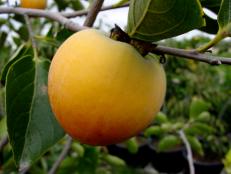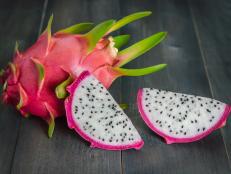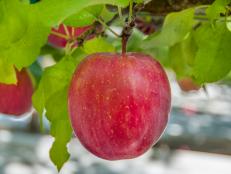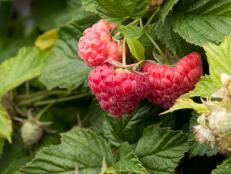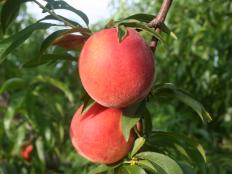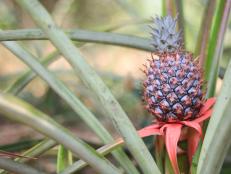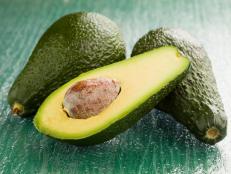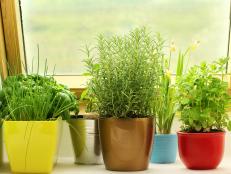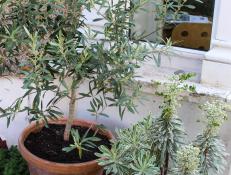How to Select Fruit Trees
Learn how to select and grow your fruit trees with these expert tips.

Frank Burkhard, the owner of Burkhard Nursery in Pasadena, Calif., shares tips for selecting and growing dwarf fruit trees.
- When buying your tree, carefully inspect its health and vigor, checking that the foliage is in good condition, the stem is straight and the dirt is not too high up on the stem.
- Citrus trees are the easiest fruit tree to grow, since they are very adaptable and need adequate light and moderate water. Apple, pear and plum trees are a little trickier, since they require at least one month with temperatures below 45 degrees to bloom. A wonderful citrus variety to consider is the Meyer lemon, which produces abundant, sweet yellow fruit.
- Fruit trees look beautiful when they are attached to a trellis. This technique, called espalier, is used to showcase fruit. It entails pruning the inner branches of the tree so the larger branches are highlighted.
- Pests are a constant challenge for the indoor gardener. It is essential to check citrus trees diligently and regularly for mealy bugs, spider mites and whiteflies.
- Citrus trees can be grown indoors indefinitely. If they start to lose their vigor, however, move them outside during the warmer months (above freezing) to perk them up.
Next Up
How to Plant and Grow a Persimmon Tree
Experts share why persimmon trees are good to grow and offer tips on persimmon types and how to care for them.
How to Grow Dragon Fruit From Seed
These bold, dramatic plants thrive indoors and out.
How to Plant a Tree
To give your new tree a good chance for success, follow these simple instructions on planting a tree.
Can You Plant Apple Seeds From Store-Bought Apples?
These days, most apple trees aren’t grown from seed, but that doesn’t mean you can’t try. If you’ve got gardening ambitions to rival Johnny Appleseed’s, here’s how to go about it.
Can I Plant Blueberries and Raspberries Together?
They’re both berries, so they should go together like peanut butter and jelly, right? Wrong.
How to Grow a Peach Tree
Learn how to grow a peach tree from a seed or young tree, and fill your shelves and freezer with delicious peach jams, pies and cobblers.
How to Grow Pineapple Plants From Tops, Seeds or Plants
Learn three methods of growing pineapples, including from grocery store fruit. Plus, get pineapple planting and growing tips for outdoors and indoors, in-ground and in containers.
How to Plant an Avocado Seed and Grow a Tree From a Pit
Don't toss that avocado pit — with a little patience, you can sprout the seed to plant and grow an avocado tree. It'll make a lovely houseplant that may someday pay you back with fruit.
How to Plant a Kitchen Herb Garden
Herbs are easy to grow, they don’t take up a lot of space and they are a healthy way to add more flavor to your cooking. Whether you’re a beginning gardener or looking to elevate your culinary skills, an herb garden is the way to go.
Grow an Olive Tree
Grow an olive tree indoors and let it take summer vacations outdoors. If your climate is warm, you can even plant it in your garden.






